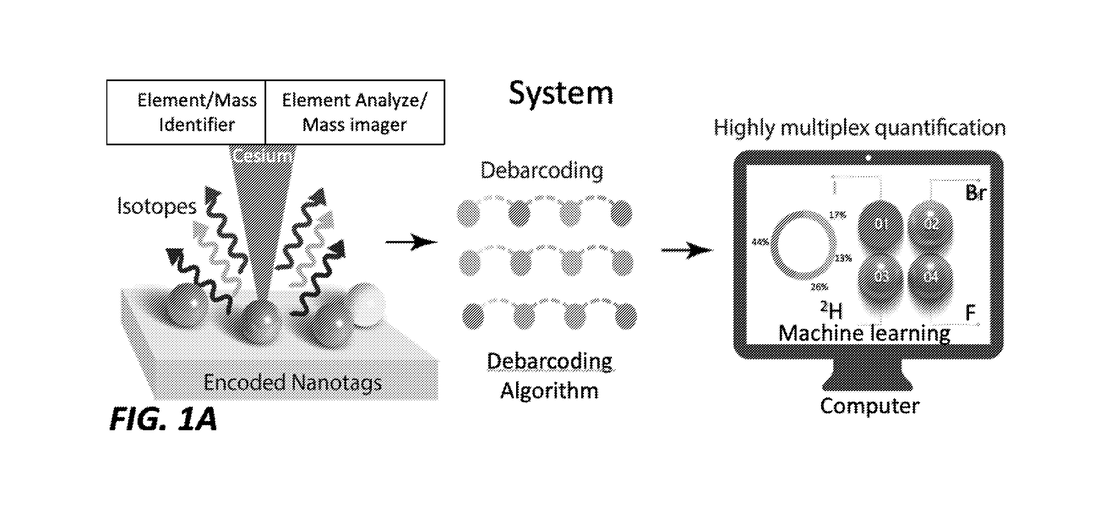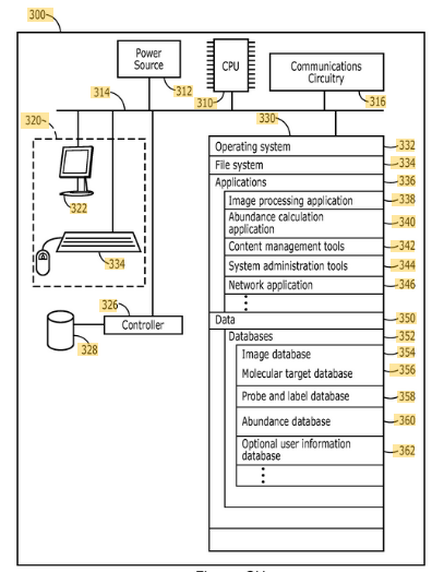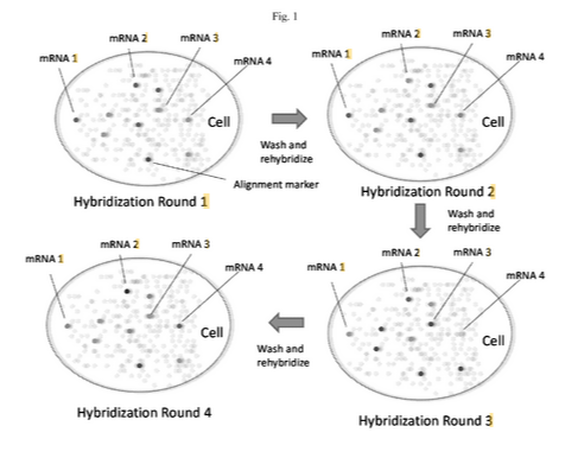WO2020041042 - ISOTOPICALLY-ENCODED NANOPARTICLES FOR MULTIMODAL HIGH-ORDER MULTIPLEXED DETECTION AND IMAGING
A system of barcoding isotopically encoded particles in combination with elemental analyses and imaging that includes a particulate matrix, at least one isotope label contained in the particulate matrix, where the isotope label operates as i) an elemental identifier, ii) a mass identifier, or iii) an elemental identifier and a mass identifier, where the matrix operates as multi-digit particulate barcodes, at least i) a mass-based imager, ii) an elemental analyzer, iii) or the mass-based imager and the elemental analyzer, and a debarcoding algorithm and an automated machine learning analysis algorithm programmed on a computer to computational extract the multi-digit particulate barcodes for quantification of spatial nanotag distributions in ion beam imaging areas.
WO2016011429 - MULTIPLEX ANALYSIS OF MOLECULES IN SINGLE CELLS BY IMAGE CORRELATION
Disclosed herein are methods and systems for analyzing visual data from multiple rounds of hybridization interactions where the same molecular target is detected by probes with different detectable labels. In particular, disclosed herein are methods and systems for analyzing sequential hybridization images for molecular profiling, where the images are obtained using multiplex fluorescence in situ hybridization (FISH).
US20150267251A1 - Multiplex labeling of molecules by sequential hybridization barcoding
The present invention, among other things, provides technologies for detecting and/or quantifying nucleic acids in cells, tissues, organs or organisms. In some embodiments, through sequential barcoding, the present invention provides methods for high-throughput profiling of a large number of targets, such as transcripts and/or DNA loci.
|
|
BIOIMAGING |
US9331113B2 Wide-field lensless fluorescent imaging on a chip
An imaging device uses a fiber optic faceplate (FOF) with a compressive sampling algorithm for the fluorescent imaging of a sample over an large field-of-view without the need for any lenses or mechanical scanning. The imaging device includes a sample holder configured to hold a sample and a prism or hemispherical glass surface disposed adjacent the sample holder on a side opposite the lower surface of the sample holder. A light source is configured to illuminate the sample via the prism or the hemispherical surface, wherein substantially all of the light is subject to total internal reflection at the lower surface of the sample holder. The FOF is disposed adjacent to the lower surface of the sample holder, the fiber optic array having an input side and an output side. The device includes an imaging sensor array disposed adjacent to the output side of the fiber optic array.



